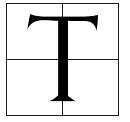Why Do We Classify Jobs by Collar Color?
Is your collar blue, white, or pink?

 Traditionally, jobs in America are classified by the color of your collar. Common designations include blue, white, or pink collar, and although today they are often metaphoric, they have a lot of traditional concrete significance. The designation of your job today can have wide-ranging effects including judgments of your educational level, socioeconomic status, and gender.
Traditionally, jobs in America are classified by the color of your collar. Common designations include blue, white, or pink collar, and although today they are often metaphoric, they have a lot of traditional concrete significance. The designation of your job today can have wide-ranging effects including judgments of your educational level, socioeconomic status, and gender.
Blue-Collar
People who are designated as blue-collar workers typically work in a field in which manual labor is required and are typically paid with an hourly wage rather than earning a salary. Traditionally, the job type was seen as a working-class occupation, but today many earn more than workers who have earned a college degree. The term blue-collar began in the 1920s as workers wore darker-colored clothes to avoid showing dirt from their jobs. Many manual laborers also wore denim outfits for their durability and henceforth were known as blue-collar. Some blue-collar workers who worked in particularly dirty industries such as mining or oil working were even downgraded further to black-collar due to the filth of their industries. Historically, blue-collar workers also tended to earn less money and needed durable clothing which would withstand the rigors of their job such as construction, mining, or repair work.
White-Collar
The term white-collar when referring to workers was first created by novelist Upton Sinclair to describe administrative workers who wore a shirt and tie to work. These jobs typically required higher education, a more formal work attire, and were paid a salary rather than on an hourly basis. These positions are generally seen as more “professional”, but in general, these views are outdated and do not reflect today’s realities. As a result of the type of work environments in which he performed they were safer from ruining their clothes and on the off-chance that they did, could more easily afford to have them laundered.
White-collar crime was a term created in 1939 to refer to a variety of frauds carried out within a business setting. These frauds are traditionally seen as less dangerous and are often treated less seriously than “blue-collar” crimes such as murder, assaults, or other violent felonies. Despite society’s value system, crimes are dangerous to society and cause unlimited harm regardless of who carries them out, their degree of violence, and the socioeconomic status of the perpetrator.
Pink-Collar
While both white and blue-collar took their meaning from the color of the clothing that they wore, pink-collar has a more esoteric origin. Writer Louise Howe created the term in the 1970s to refer to fields where women were highly concentrated at the time such as secretary, nurse, and teacher. These workers were often paid less as they entered the working world in mass and were prohibited from many “male” industries after World War II. This term has often resulted in discrimination towards women and boundaries are beginning to break down as women continue to seek their rightful equality in the workplace.
Other types of collars
As society has changed over the years more types of collar designations have been added. It is now common to refer to someone as red collar if they work in the government due to the red tape/ink with which they are commonly associated. Red is also commonly known as a symbol of communism so it could also apply to someone who works for the communist party of various nations.
What happens if you are a mix of white and blue-collar? Then a purple collar is for you. This designation refers to people who are commonly assumed to be white-collar workers, but you also perform many blue-collar associated tasks such as an information technology professional.
Other types of collar designations are based both on the clothes that the performer wears and the feelings of society towards their work. For example, prisoners who perform tasks are known as orange-collar, while military workers are known as brown collars for the colors of their uniforms. Green-collar workers have typically been associated with nature and accordingly, green-collar workers tend to work outside. Scarlet-collared workers typically work in sex-based industries and their designation harkens back in culture to Nathaniel Hathorne’s book the Scarlet Letter.
Lastly, we have two types of workers who tend to be derided by the rest of society. First, steel-collar workers is the term used to describe the robots who have taken away blue-collar jobs. Secondly, the term no-collar refers to people who are bohemian and lack a steady job such as artists or craftsmen who value following their passions over making money.
Conclusion
For many years society has judged its citizens first and foremost by their chosen career or profession. A typical first question when you are getting to know someone is what do you do for work as if that sums up a person’s whole personality. We typically make assumptions about a person’s education, intelligence, aptitude, personality, and value simply by the type of job that they do and the collar system allows us to easily sort people into categories from which we can feel justified passing judgment. Just as job categories are increasingly merging and now require a combination of skills and strategies such as purple-collar work, society will benefit from merging all of the colors of collars together and simply evaluating people by who they are and what benefit they bring to others rather than simply by what type of job they perform.
Sources

